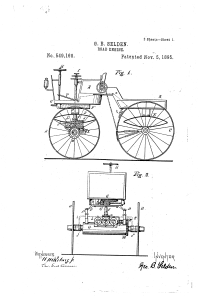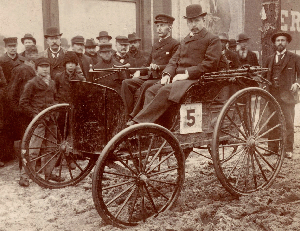Swan Lake, Tchaikovsky’s ballet, opened in Saint Petersburg, Russia, in 1895. Idea: Children could listen to a portion of the music and perhaps transfer what they hear to art. Children could read Swan Lake, written by Mark Helprin and illustrated by Chris Van Allsburg.
Volleyball was invented by William G. Morgan of Massachusetts in 1895. He invented the game to be played indoors and that would provide good exercise but not as much physical contact as other sports, for example basketball.
Moving picture projector was patented in 1895. Auguste and Louis Lumiere created the cinematograph, and the first film they recorded was of workers leaving their factory.
Frederick Douglass died in Anacostia Heights, DC, in 1895. He was born in Tuckahoe, Maryland, probably in February 1818. He escaped from slavery and became a popular abolitionist and speaker. Children can learn more at Frederick Douglass. Children can also read some of his works at Project Gutenberg.
Hershey Bar was first sold in 1895. Before Milton Hershey, chocolate was very expensive, but his methods of candy making allowed the average customer to buy a candy bar. Children can learn more about the history of the Hershey Bar at: Hershey. Idea: how about S’mores?
Caroline Willard Baldwin became the first woman to obtain a doctor of science degree in 1895. She graduated from Cornell University. She wrote an article, A Photographic Study of Arc Spectra, for the Physical Review journal. She then taught physics at the California School of Mechanical Arts.
“America the Beautiful” was published first in poem form in 1895 by Katherine Lee Bates, a professor at Wellesley College. Stories say she wrote the poem after visiting the top of Pikes Peak in Colorado. Children can read the poem at: America the Beautiful.

Selden’s Patent Design
George B. Selden patented the first gasoline-powered automobile in 1895. Now you might think that this is rather a boring event, but you would be wrong. Selden patented this engine after seeing a slightly different one at the Philadelphia Centennial Exposition in 1876. He and some partners tried to gain a monopoly over the automobile industry. However, Henry Ford and others won a lawsuit that had lasted over eight years. Ford’s reasonably priced cars won over the market, and Selden lost his monopoly. Children can see Selden’s patent at: Automobile.
X-rays were discovered by Dr. Wilhelm Roentgen in 1895. He was conducting experiments in other fields when he recognized the importance of the rays he called X-rays. He then began to systematically study and document the newly discovered X-rays. He received the first Nobel Prize in Physics in 1901. Children can view a video about X-rays at: X-Ray Video.
First automobile race in the United States took place in 1895. This is an interesting story. Cars had been invented only two year earlier. The Chicago Times-Herald wanted to promote cars and boost newspaper circulation, so the newspaper sponsored the race. Approximately 83 cars were entered, but only six cars participated in the 54-mile race from Chicago to Evanston and back. The cars and drivers had to battle cold weather, snow, and local laws to finish. The winner, Charles Duryea in his motorized wagon, averaged seven miles per hour. He won $5000 (over $100,000 in today’s money). Children could learn more at: First Automobile Race.

